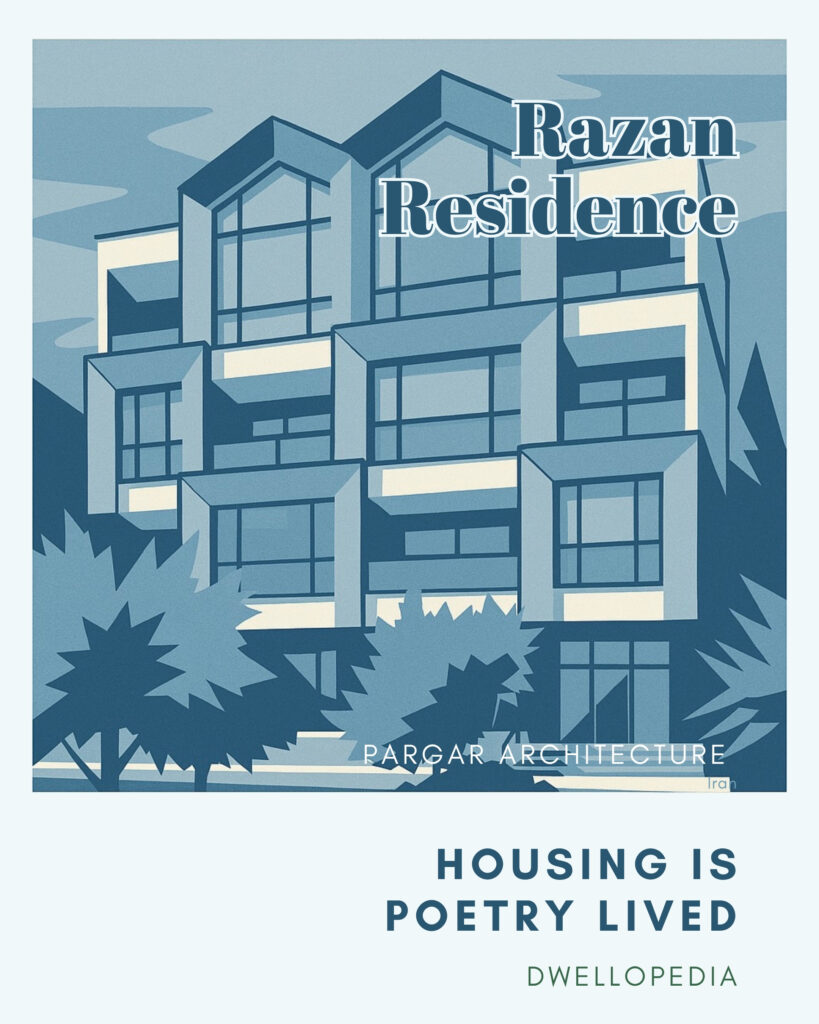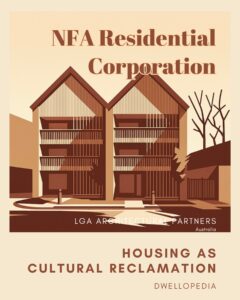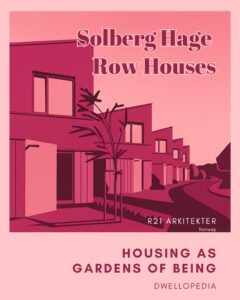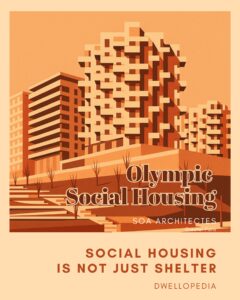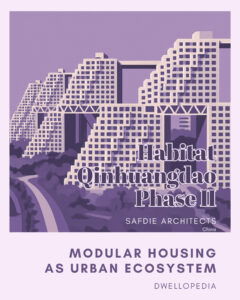Razan Residence, designed by Pargar Architecture and Design Studio, is nestled in the rich cultural and natural context of Iran, where architecture often negotiates between tradition and modernity, intimacy and expansiveness. This private residence goes beyond creating a shelter; it explores the interplay of light, materiality, and spatial transitions that evoke memory, sensory depth, and a profound connection to place.
The project embraces a restrained material palette and carefully orchestrated volumes that respond to climate, privacy, and cultural nuances. Its architectural language is simultaneously poetic and pragmatic, creating spaces that are intimate yet expansive, timeless yet rooted in their environment. By doing so, Razan Residence challenges the contemporary tendency toward homogenized housing typologies, inviting a reflection on how architecture can reimagine domesticity as a layered, lived experience.
In a time when housing risks becoming standardized and commodified, Razan Residence offers a model for how thoughtful design can nurture emotional resonance, sensory richness, and cultural continuity. It beckons us to consider: What does it mean to dwell poetically in a home today?
Housing as Poetic Dwelling: Crafting Emotional and Sensory Depth in Domestic Architecture
At the heart of Razan Residence lies the proposition that housing transcends function—it is a poetic act of dwelling. This dwelling is sculpted through light, shadow, texture, and spatial sequence, inviting inhabitants to inhabit not just space but layered emotional and sensory narratives. The project compels us to rethink housing as a realm of memory, atmosphere, and intimate encounter with place.
Insights & Reflections
1. Light as Narrative: Shaping Experience Beyond Functionality
Razan Residence uses light not simply for illumination but as a medium of storytelling and emotional modulation. Carefully calibrated openings and volumes direct daylight to create shifting patterns of shadow and glow, animating interiors throughout the day.
How does this poetic use of light transform the inhabitant’s relationship to space? By choreographing light as a dynamic participant, the project moves architecture beyond static enclosure toward an ever-changing sensory journey. It challenges us to ask: How can light reveal memory and time in our homes, turning mere shelter into lived narrative?
2. Material Restraint and Tactility: Evoking Memory and Place
The restrained palette of natural materials—stone, wood, and plaster—engages the senses beyond sight, inviting touch, smell, and sound into the domestic experience. These materials root the residence in its context while evoking a timeless sensory memory.
How might materiality in housing serve as a repository of cultural and emotional memory? Razan Residence teaches that materials are not inert backdrops but active agents of dwelling, creating layers of meaning that deepen over time.
3. Spatial Sequence and Thresholds: Orchestrating Intimacy and Expansion
The residence unfolds through a sequence of carefully composed thresholds—between inside and outside, public and private, light and shadow. These spatial transitions modulate experience, offering moments of retreat and expansion that mirror the rhythms of daily life.
What role do thresholds play in shaping the emotional life of a home? By navigating these liminal spaces, residents engage in a poetic dialogue with their surroundings, fostering a deep sense of belonging and self.
4. Contextual Sensitivity: Bridging Tradition and Modernity
Razan Residence respects its cultural and climatic context through architectural gestures that balance tradition with contemporary innovation. Its form and materials respond to local climate patterns while embracing modern spatial organization.
How can housing honor tradition without succumbing to pastiche or stagnation? The project exemplifies a thoughtful balance, suggesting that architectural poetics is a way to engage meaningfully with both past and present
Livability & Social Dynamics
Beyond its poetic qualities, Razan Residence offers a deeply comfortable and adaptable living environment. The spatial layering provides privacy and openness, accommodating diverse modes of inhabitation—from solitude to social gathering. Natural ventilation, daylighting, and material warmth foster sensory wellbeing, while intimate courtyards and terraces extend living into nature.
Socially, the residence reflects a balance between individual retreat and family interaction, allowing inhabitants to negotiate their connections with subtlety. The project underscores that livability is not mere functionality but the orchestration of emotional and sensory richness.
Conclusion
Razan Residence teaches us that housing is far more than a physical container; it is a poetic realm where memory, light, materiality, and space converge to create profound dwelling experiences. It unsettles utilitarian views of housing, reminding us that a home’s true essence lies in its capacity to evoke, nurture, and transform.
In a world increasingly dominated by standardized housing and commodification, how might we reclaim the poetic in domestic architecture? Can homes become sites of sensory richness and emotional depth that respond to both place and personal narrative? Razan Residence invites us to imagine a future where architecture awakens our capacity to dwell meaningfully and poetically.
What will it take to design homes that resonate as deeply as the lives they contain?

